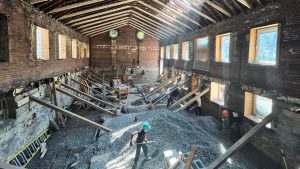TORONTO — Heritage Toronto released its State of Heritage Report in February, providing 15 recommendations on how to better promote and protect the city’s heritage.
The report was released following a year of research, consultations and engagement with 58 community organizations and over 500 members of the general public.
As part of its role as adviser to the city on heritage matters, Heritage Toronto has been producing reports since 2001.
Although the report identifies strong examples of successful heritage work, it also describes an overall sense of public discouragement at the continued slow pace of heritage protection and, in some cases, the outright refusal of private and public leaders to recognize and integrate heritage into their plans, states a release issued by Heritage Toronto.
The reports calls for:
- A need for greater recognition and protection of Toronto’s suburban heritage, finding that 91 per cent of listed properties are in the downtown council area. For example, Scarborough has only 163 listed properties, compared with over 10,500 in Toronto and East York;
- More incentives for environmentally friendly adaptive reuse of heritage buildings, recognizing that construction and demolition debris currently accounts for approximately 24 per cent of annual municipal waste. Meanwhile, development and population growth are encroaching on the city’s green space. Parkland supply is still considered low in major parts of the city.
- An inclusive natural heritage network throughout the city, recognizing initiatives such as the Great Streets program, which integrates urban infrastructure, heritage architecture and the natural environment.
- An economic impact assessment to quantify the value of heritage to Toronto’s economy in cultural tourism dollars, in labour income, employment and tax revenues.
Furthermore, the report indicates the recent “threats” to Ontario Place and the Hearn Generating Station in Toronto has brought into sharp focus the future of the natural heritage of the waterfront and the question of public access.
“Three decades of waterfront planning have been thrown out the window by the provincial government, ignoring the will of the people,” said Councillor Paula Fletcher in a statement.
Fletcher moved a motion at Toronto City Council to begin negotiations aimed at acquiring the waterfront Hearn Generating Station, which was sold privately by the province late last year.
“Throughout Toronto’s history, it has been public action that saved so many iconic features and city landmarks like St. Lawrence Hall, twice slated for demolition,” said Allison Bain, executive director of Heritage Toronto. “Sadly, in recent years, the public voice has been muted in decisions about civic spaces, such as Davisville Public School and Ontario Place.”










Recent Comments
comments for this post are closed